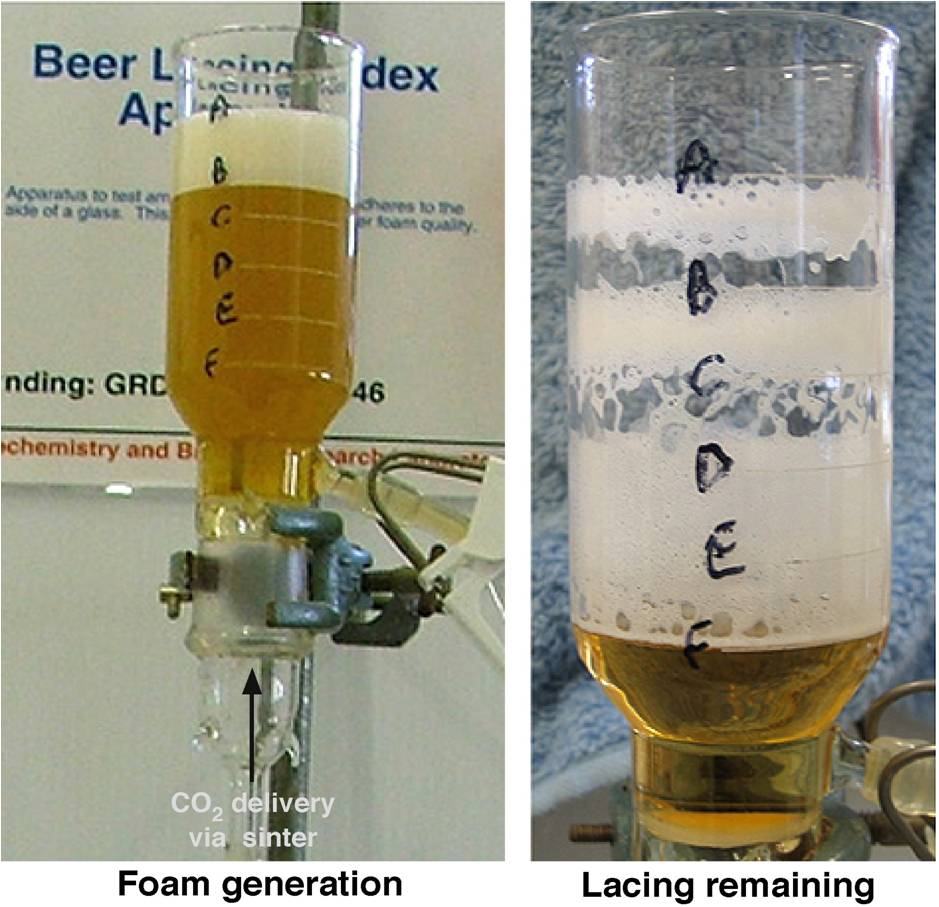What makes the perfect beer foam? Is it nucleation in the glass? Beer is well-traveled ground on Science 2.0 and that means beer foam has been covered as well.
The biggest advice. Be careful with the detergent you use to wash your glass. An already lipid-optimized brew will not benefit from extra fat left over by detergent.
Cornell food researchers focus on lipids too, barley lipid transfer protein No. 1, aka LTP1.
Bitter compounds found in hops, like iso-alpha acids, are important to brewers, says Cornell's Karl J. Siebert, principal investigator and author of "Recent Discoveries in Beer Foam" in the Journal of the American Society of Brewing Chemists.

How to create a beer lacing index and understand foam. Link: The Science of Beer Foam. Credit: Dr. Evan Evans
"Dissolved gases in the beer – carbon dioxide and, in some instances, nitrogen – play a role. So do acidity, some ions, ethanol levels, viscosity and numerous other factors that have been tried by brewers and scientifically tested," says Siebert, professor of food science and technology at the New York State Agricultural Experiment Station in Geneva, N.Y. "But LTP1 is the key to perfect beer foam."
Fascinating as foam is to chemists, it's of vital importance for the sensory experience of beer appreciation, insists Siebert, formerly a longtime research chemist in the industry, including at the former Stroh Brewery Co. in Detroit.
"To some beer aficionados, the sign of a good head – the proper consistency, color, height, duration – is to draw a face with your finger in the foam, before taking the first sip," the food scientist notes. "If the face is still there, when the glass is drained and the liquid is gone – that's seriously good foam."





Comments